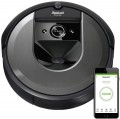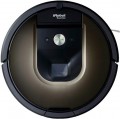Dust collector capacity
The nominal volume of the dust collector installed in the vacuum cleaner.
This indicator largely depends on the type of unit (see above). For example, in most handheld household models, the capacity
does not exceed 0.5 L. The volume of the container in upright vacuum cleaners and robots can be somewhat larger — among the first variety there are quite a few models for
1 – 2 liters or even more, and among the second — by
0.6 – 1 liter and a little more. For conventional vacuum cleaners, the minimum figure is actually about 0.8 – 1 L; dust collectors for 1 – 2 L and
2 – 4 L are very popular in such devices; the maximum capacity is actually
4 – 6 liters — units of a similar layout, but with a larger capacity, are usually referred to as household ones. In turn, relatively small containers are occasionally found among workshop models. However, in vacuum cleaners of this type, the capacity is generally quite large — it can reach
26 – 50 liters or even
more ; the same applies to industrial (construction) units.
In general, a larger dust container allows you to work longer without interruptions. On the other hand, a capacious container itself takes up more space and, accordingly, affects the size, weight and price. So when choosing th
...is parameter, it is worth considering the actual features of the use of a vacuum cleaner. Here we can give such an example: for a full-scale cleaning of an average city apartment, a capacity of about 1 – 1.5 litres is required. Thus, say, a 4-litre bag allows you to carry out two such cleanings with sufficient efficiency without unloading the vacuum cleaner. There are more detailed recommendations regarding the optimal volume of the dust collector, including specific cleaning options. These recommendations can be found in special sources.Automatic power control
The
automatic power control function is found mainly in robot vacuum cleaners. When driving onto the carpet, the vacuum cleaner automatically increases motor speed and suction power to achieve proper cleaning results. Usually robot vacuum cleaners that support this mode are equipped with a turbo brush and a spacious dust container. It must be taken into account that when cleaning carpets at high power, the battery life of the vacuum cleaner is reduced.
Crossing threshold
The highest height of thresholds and various small obstacles that the robot cleaner can effectively overcome.
Most modern robots are able to effectively cope with obstacles with a height of 10 to 18 mm — this allows at least without problems to cross the edges of carpets, and small height differences at the boundaries of rooms (due to the difference in the type of coating), etc. But the models where the indicator is 20 mm or more are already referred to as robots capable of
crossing high thresholds. However, even in such devices, the permissible height of obstacles does not exceed 30 mm. It is due to the fact that to overcome high obstacles, in particular, large wheels and high ground clearance are needed — and these features, in turn, increase the overall height of the robot, make it difficult to move under furniture and other low-lying objects, as well as reduce suction efficiency. On the other hand, even
thin robots, whose height does not exceed 70 mm, can have very good crossing ability — for some of them, the maximum threshold height is about 25 mm.
Battery voltage
The rated voltage of the battery used in the vacuum cleaner with the corresponding type of power supply (see above).
Initially, manufacturers select the characteristics of the battery (including voltage) in such a way that the vacuum cleaner can be guaranteed to deliver the power claimed in the specifications. Therefore, when choosing this indicator often does not play a decisive role. However, it can also be useful in such cases — for the most reliable comparison between models with different battery capacities in ampere-hours. See "Battery capacity" for details.
In addition, voltage data can be useful during operation — for example, to find a spare/replacement battery or a third-party charger.
Battery capacity
The capacity of the battery installed in the vacuum cleaner.
Recall that batteries are used in all robots, as well as other types of vacuum cleaners for which mobility is important; see "Power supply" for details. As for battery capacity, theoretically, a larger battery allows you to work longer without recharging. However, there are nuances. Firstly, the actual battery life of the unit will also depend on its type, power and some features of the functionality. Secondly, the actual battery capacity is determined not only by this indicator but also by the voltage in volts. So if these batteries differ in voltage, you need to convert their capacity into watt-hours and use this data when comparing. These calculations are described in more detail in special sources.
In light of all this, only vacuum cleaners with similar specifications can be directly compared in terms of battery capacity. And it is best to evaluate the actual battery life by the directly claimed operating time.
Battery run time
The operating time of a battery-powered vacuum cleaner (see "Power supply") on a single battery charge.
Usually, the average operating time in normal mode is indicated here. Accordingly, in fact, the battery life of the vacuum cleaner may differ slightly from the claimed one, depending on the chosen application format. Nevertheless, the operating time indicated in the specifications is a fairly reliable indicator; it can be used both for a general assessment of battery life and for comparing the selected vacuum cleaner with other models.
Separately, we note that increasing battery life requires either the use of more capacious (and therefore more expensive and heavier) batteries or a decrease in engine power (and the efficiency of the unit as a whole). So it is worth looking specifically for a long working vacuum cleaner if these moments are outweighed by a long operating time.
Charging time
The time required to charge the cordless vacuum cleaner fully (see "Power supply").
Larger batteries tend to take longer to charge. On the other hand, modern batteries can use various solutions that speed up the process, so there is no strict dependence here.
Separately, we note that the speed of charging batteries is usually uneven: at first, the process is fast, then it gradually slows down. So if, for example, the specifications indicate a charging time of 2 hours, then charging from 0 to 50% will take a little less than an hour, and from 50% to 100% the remaining time.
Cleaning area
Cleaning area for which the robot vacuum cleaner is designed.
It is the maximum size of the room that the device can effectively process without the need to empty the dust container or charge the battery. It is worth choosing according to this parameter with a certain margin — this will give an additional guarantee in case of various emergencies. On the other hand, you should not take too much stock: after all, a large cleaning area requires more capacious batteries and capacious dust collectors, which significantly affects the dimensions, weight, and most importantly, the price of the vacuum cleaner.
As for specific figures, the most modest models nowadays are designed for 45 – 60 m2 — this corresponds to an average apartment with 1 – 2 rooms. And in the most advanced and heavy devices of this type, the cleaning area can be 300 m2 or even more.

